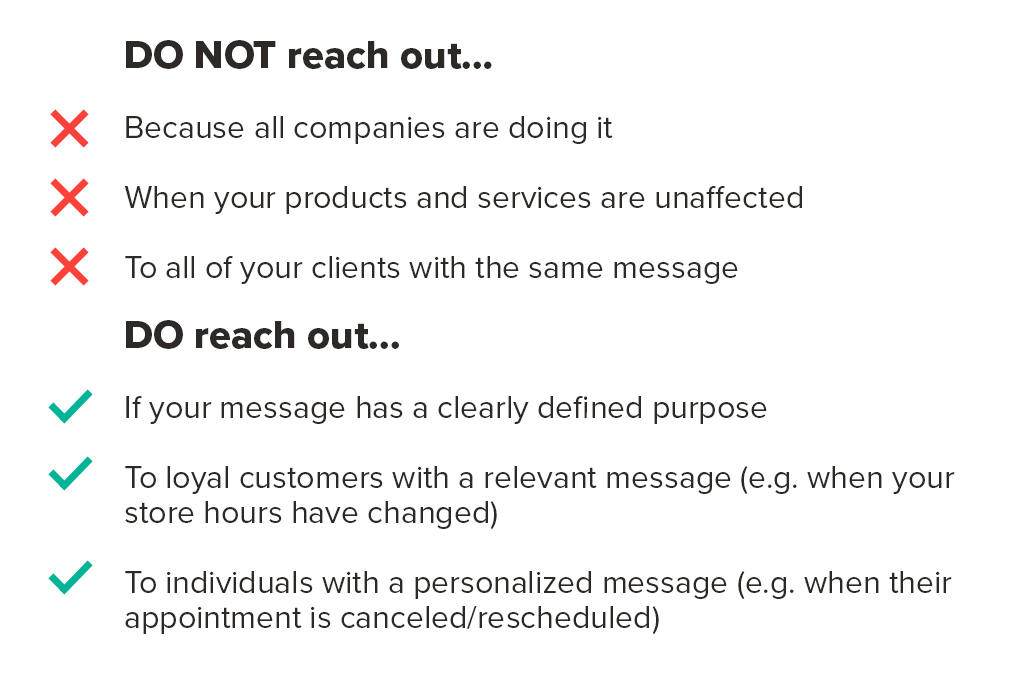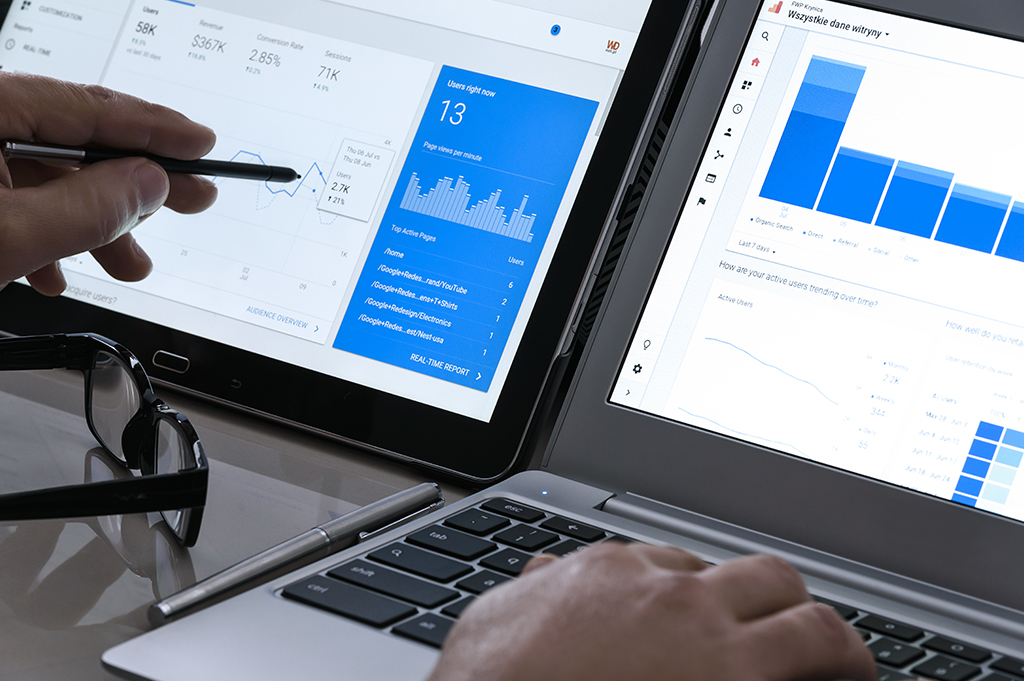As we cope with today's unparalleled circumstances, we must recognize the importance of direct communication from company to customer. Email marketing is not only very cost effective, it is also the preferred channel for most consumers. Research from paved.com shows that global email open rates, in the last three weeks of March, increased by 21%. Clickthrough rates trail behind, at a mere 3.9% increase. This shows us that there are plenty of opportunities out there to develop a customer-centric communication strategy with your customers, remaining thoughtful and relevant while making sure not to overdo it.
When to Reach Out
Seeing so many COVID-19 related updates in your inbox, you may feel pressure to reach out to your customers right away. However, one wrong move could affect their perception of your brand and may cause them to unsubscribe -- or even worse: report your message as SPAM. Internet Service Providers and Webmail providers lean heavily on subscriber (non-)engagement stats when it comes to your email sender reputation. A large increase in SPAM complaints is seen as a red flag and may eventually lead to your domain being blacklisted. The bottom line: do not reach out to your customers without a good reason.

Choose Your Audience Wisely
Your customers' lives and needs have changed rapidly. Buying priorities have shifted. While they are coping with these unusual circumstances, you should be wondering what it is they need today. This is your cue to adapt and find new ways of engaging with your audience by:
- Providing service rather than selling in your messaging
- Generating new ideas with your marketing team on how to be useful for your customers: discounts, free shipping, suspended fees and helpful content are some examples
- Experimenting with new, thoughtful subject lines and personalized content
- Making sure to focus on your customer experience and review every message that you send on its relevance, tone and usefulness
- Focusing on kindness and sensitivity
Clean and Grow Your Data
The market is moving quickly, but data segmentation rules have been relatively static. Right now, it is likely that your existing marketing segments no longer apply. Time to take a new, fresh look at your data and re-think:
- What has changed and what groups you can identify based on today's needs
- How you can answer their needs and strengthen your bond with them
- Keep in mind what you already know, based on consumer interests and previous engagements
- Start by focusing on your most engaged and loyal customers

As many consumers' shopping behavior has moved to online-only, this is also an opportunity to re-engage with your previously inactive customers. But be careful here as well:
- Do not send the same message to all of your inactive customers
- Instead, look for recognizable target groups using previous web and shopping behavior
- Make sure to only offer products and services that are relevant to them today
Automating data segmentation, email personalization, and triggered sending will save you time, even in the short term.
Your customer database is one of your most important assets. Keep it growing, especially now, and use it to compensate for a potential decrease in ad revenue with these tactics:
- Implement an easy sign-up process for your email marketing to turn web visitors into first-party contacts
- Consider setting up a multi-layer subscription model, with options for different types of communications
- Curb abandonment by giving unsubscribers more flexibility than just a global opt-out
Measure the Engagement
Driven by a need for speed, chances are that you have been developing one-off campaigns rather than automated campaign processes. Some of these interactions may only be relevant during the current crisis situation. It is also possible that your customers, or your business propositions, have changed indefinitely. Automating data segmentation, email personalization, and triggered sending will save you time and greatly reduce the risk of human error. Regardless of the outlook, even automating short-running campaigns can be a good investment.
For example:
- Use dynamic content in messages with region-specific updates
- Automate segmentations based on delayed shipping
Implementing proper tagging in your emails is critical to learning from this crisis for your future marketing efforts
While we don't know what tomorrow will look like, making sure that proper tagging is implemented into your email messages and links will keep your data clean. This is critical to learning from this crisis and being prepared for your future marketing efforts.
MightyHive is Here to Help
How much have you adjusted your email marketing strategy in response to the current COVID-19 crisis? As a Salesforce Certified Marketing Cloud partner, MightyHive can assist you with any of the challenges described - and more.
Whether you are looking at a dramatic spike in demand for your internal team, or you are in need of a partner to help you form a new strategy to connect with your customers please contact us.
Curious about other Salesforce products? Check out this post to see how MightyHive can help you activate a unified data and media strategy with Google Marketing Platform and Salesforce.

